
Carolina Härdh crafts furniture for restaurant Vrå from its own food waste
Rice starch, fish bones and oyster shells from the kitchen of Gothenburg restaurant Vrå were combined to form this dual-purpose stool and side table, created by local designer Carolina Härdh.
The versatile furniture piece was conceived for use in the eatery, which serves Japanese dishes made from local Swedish produce, in a bid to show its guests the unexpected value of food waste.
The material developed by Härdh resembles a biobased version of terrazzo. Instead of a cement base, it derives its strength from the crushed seashells, which are equally rich in calcium carbonate.
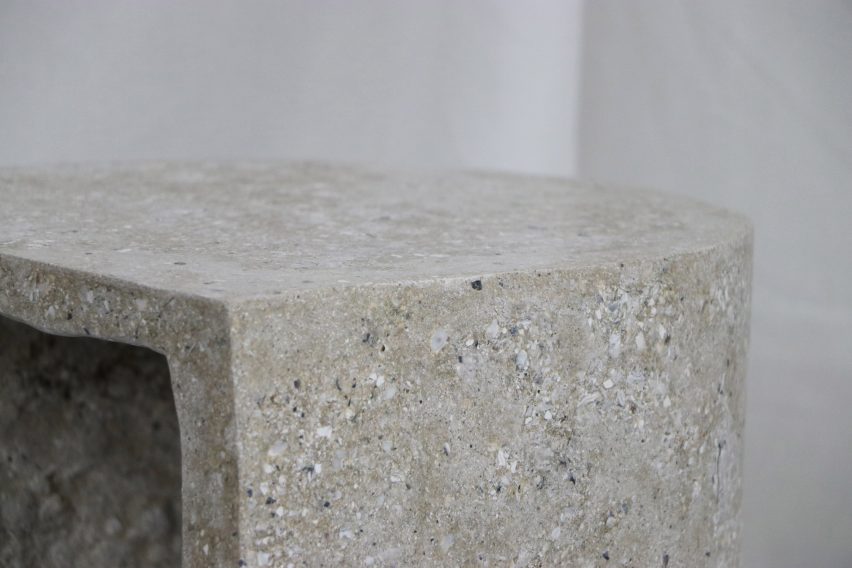
To avoid waste from the production process, any biomaterial leftovers were formed into small chopstick rests, called hashioki, or used as a nutrient-rich fertiliser by the farm on Vrå's rooftop, where the restaurant sources some of its herbs and vegetables.
"It makes the entire building where Vrå is located a small ecological system, providing humans with food and giving back to nature in return," Härdh explained.
To create the material, Härdh ground the oyster shells into chunks of varying sizes and combined them with dried bits of kombu – an edible kelp traditionally used to make soup stock in Japanese cuisine.
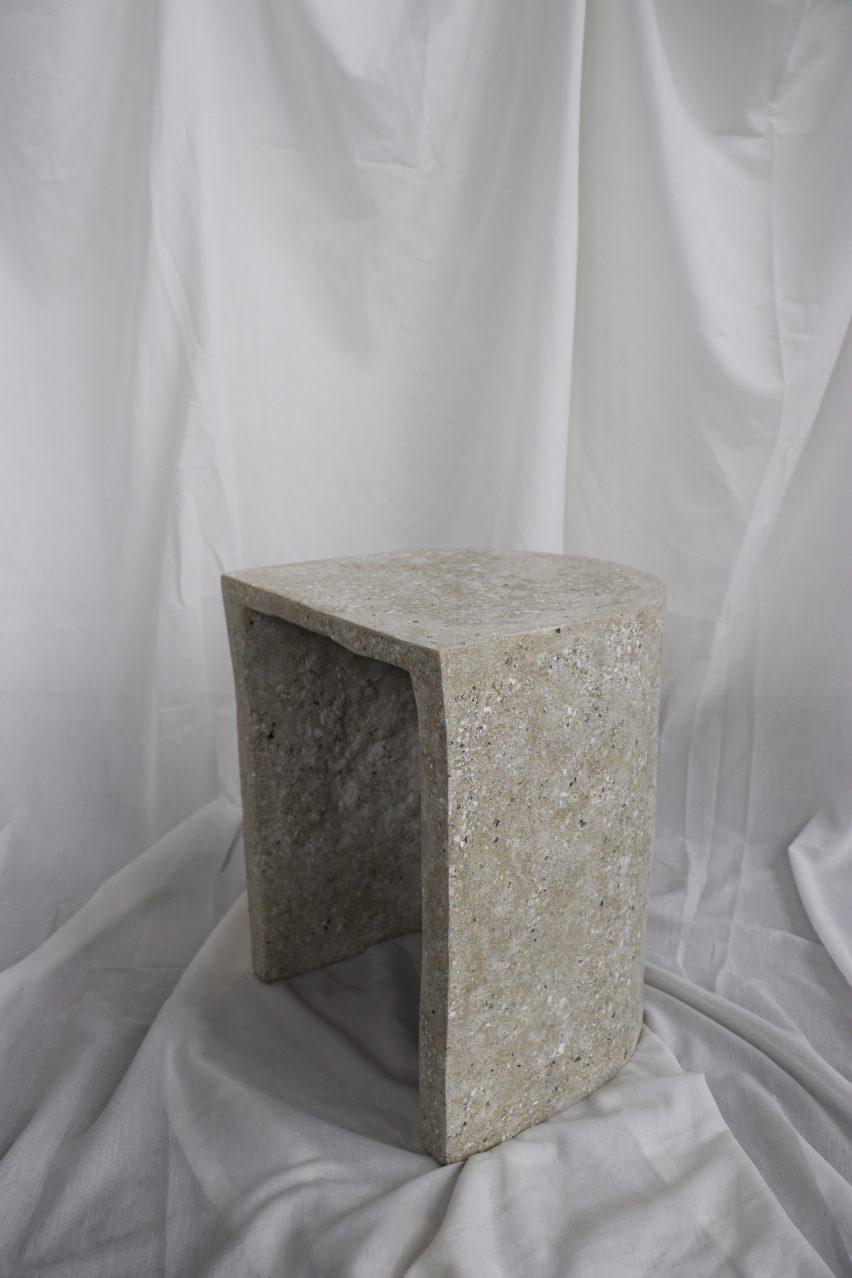
Together, these two ingredients act as an aggregate and help create the speckled texture that is reminiscent of terrazzo.
The mixture is bound together by fish glue – a natural adhesive made by boiling down fish bones – and starch sourced from the water used by the restaurant to soak rice.
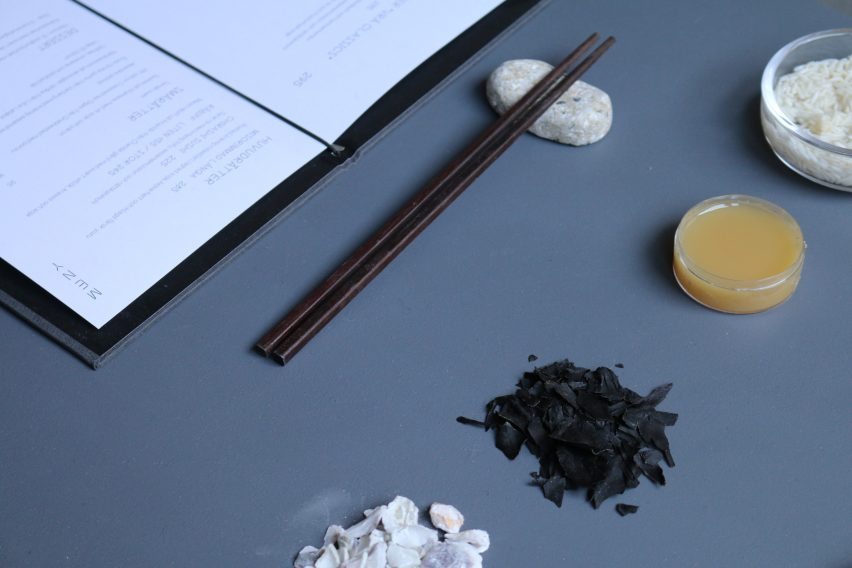
"Even before I started the project, I knew that I wanted to use the wild Crassostrea gigas oysters from the Swedish west coast because they are an abundant local resource," Härdh told Dezeen.
"The rest of the components were picked based on an investigation I did of the restaurant's waste bin."
When combined they form a concrete-like dough, which the designer cast into two separate moulds to form the stool's geometric base and seat.
Instead of adding an additional adhesive, the biomaterial was also used like putty to merge the two different components and to patch up any holes.
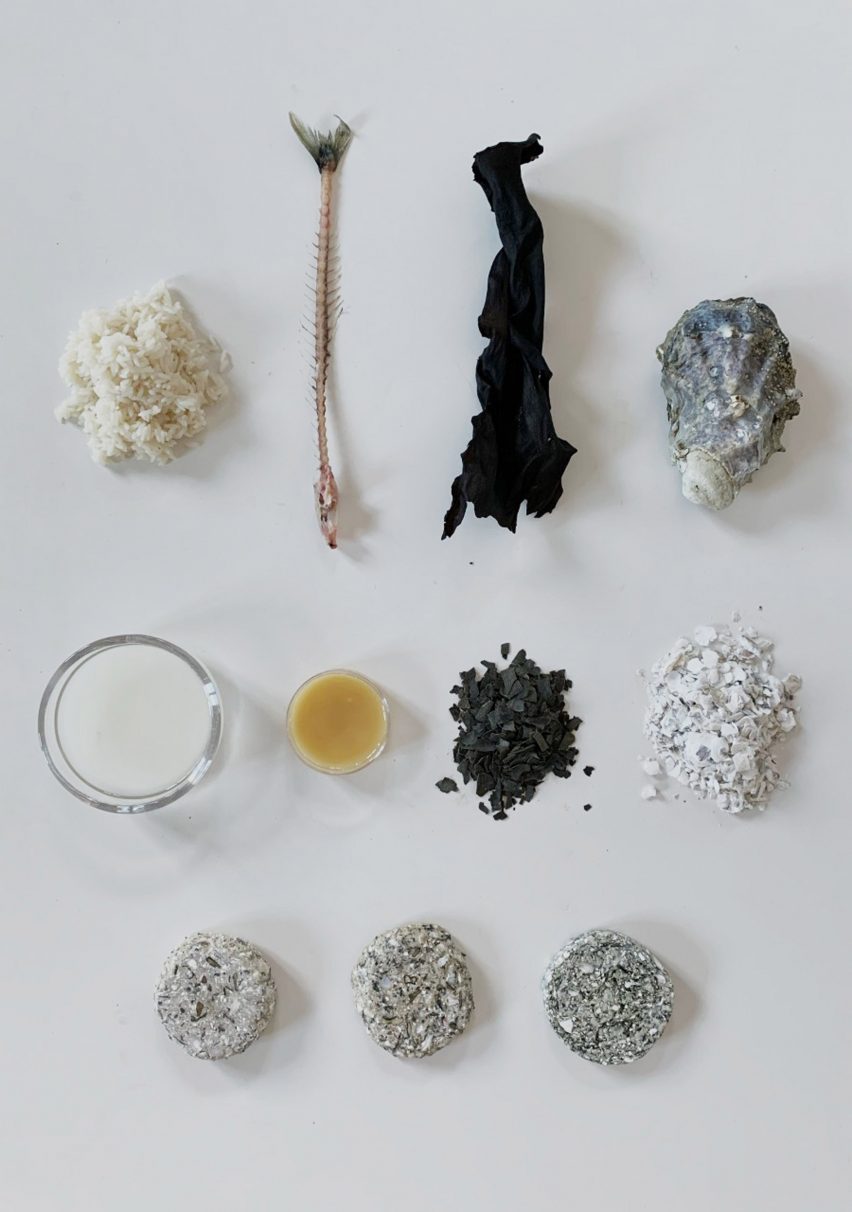
Härdh formed leftover bits of material into oblong pebbles to act as chopstick rests, illustrating the different scales and applications the material can be used for.
The stool, which was designed to show off various different finishes, has an interior with a rough and organic shape while the exterior is sharp-edged and finely sanded.
Through this focus on tactility, Härdh hopes to make circular, zero-waste principles tangible and understandable for the restaurant's guests.
"Sometimes, it isn't enough to get an understanding of something through a text or an explanation," Härdh said. "We need to understand something through more senses, like when toddlers put things in their mouth to explore how they work."
"This may add something to the guest's experience, to follow the ingredients from being food on their plate to becoming waste material and interior object."
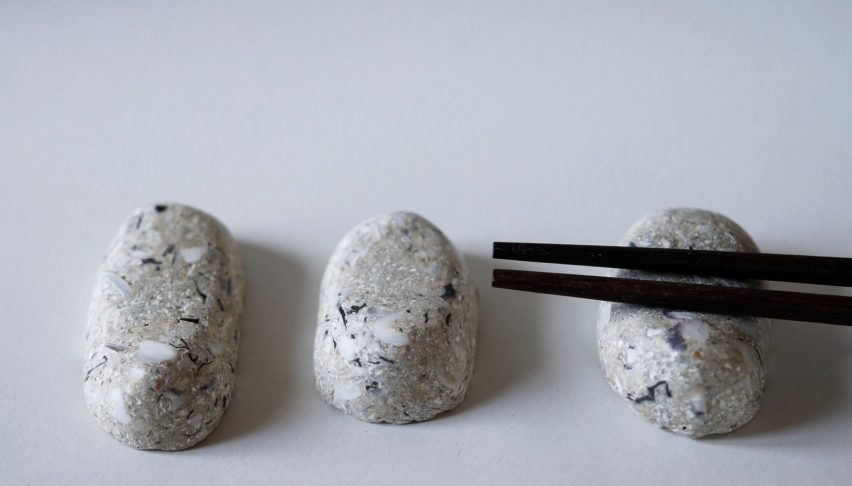
Since fish glue dissolves in water, Härdh says the final designs can be recycled to create new objects or left to biodegrade, although she has not yet tested how long this would take.
"The material is only made of components that come from nature and thus can go back to nature," she explained.
"Oyster shells and fish glue contain a lot of good nutrients that can be used to enrich soil. Except for the rice starch, all the components come from the ocean, which makes the material biodegradable in relation to the ocean, too."
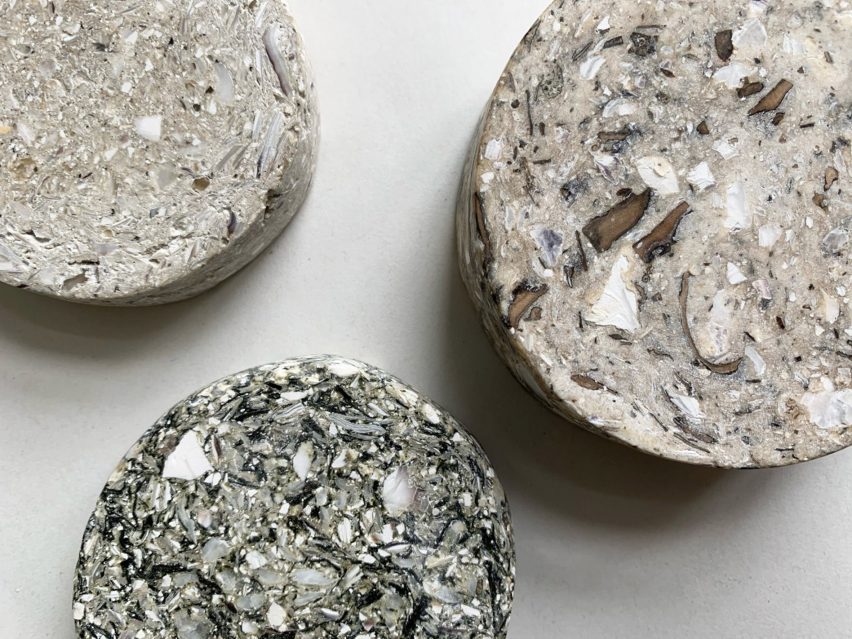
As oyster shells consist of around 95 per cent calcium carbonate, a growing number of designers have started using them as a durable biomaterial alternative to mined calcium carbonate in the form of limestone – an emissions-intensive material used to make cement.
London design studio Newtab-22 recently used them to develop a concrete alternative, while a duo of RCA students turned them into artificial reef structures that double up as cremation urns.